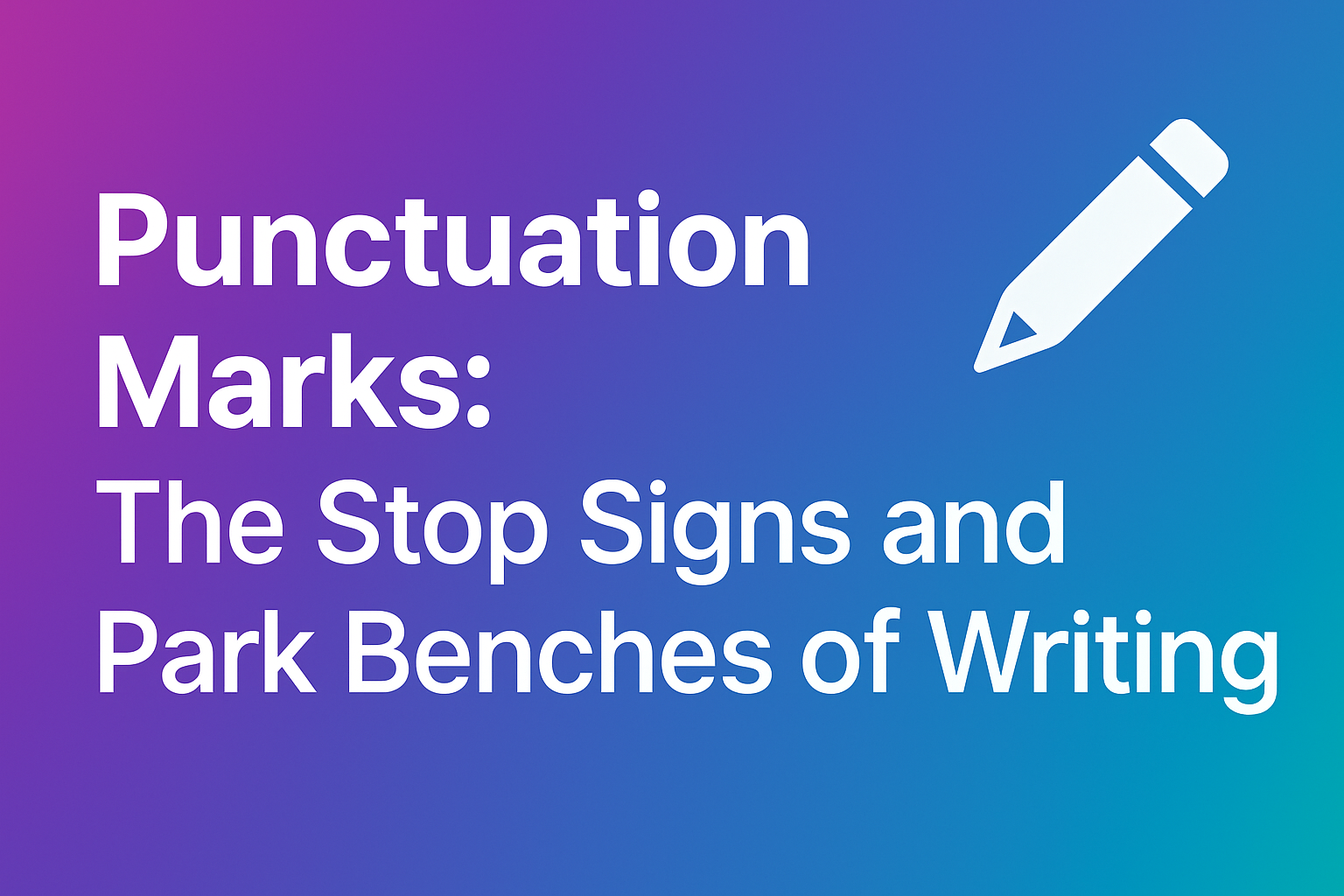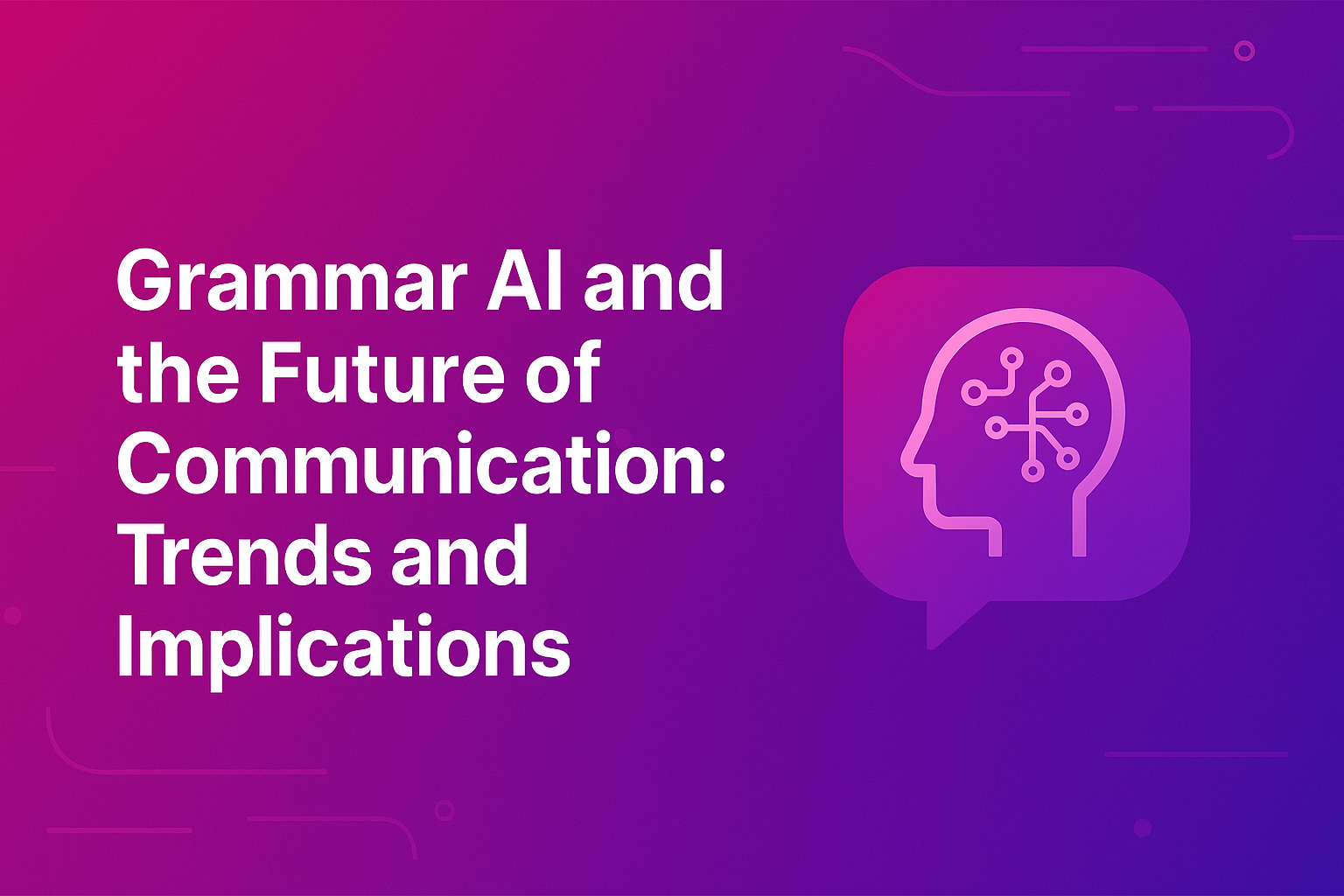Artificial intelligence has permeated nearly every aspect of our digital lives, from the recommendations in our streaming services to the routes in our navigation apps. Among the most powerful yet subtle AI revolutions is happening in how we compose text and communicate. Grammar-checking AI and language technologies are rapidly evolving beyond simple spelling and grammar corrections, fundamentally changing our relationship with written language. This article explores the current state, emerging trends, and profound implications of grammar AI on the future of human communication.
The Evolution of Grammar AI
From Red Squiggly Lines to Contextual Understanding
Grammar-checking tools have come a long way from the basic spell checkers of the 1970s and the rudimentary grammar checkers of the 1990s that often produced more frustration than assistance.
First Generation: Rule-Based Systems
Early grammar checkers relied on hard-coded linguistic rules:
- Pattern matching for common errors
- Fixed dictionaries of accepted spellings
- Basic grammatical rules
- Limited contextual awareness
These systems frequently missed complex errors and generated false positives for unusual but correct constructions.
Second Generation: Statistical Models
As computational power increased, grammar checkers began incorporating statistical models:
- Analysis of large text corpora to identify patterns
- Probability-based error detection
- Improved context sensitivity
- Better handling of edge cases and exceptions
Current Generation: Neural Networks and Deep Learning
Today's advanced grammar AI leverages neural networks trained on massive datasets:
- Contextual understanding of entire sentences and paragraphs
- Recognition of subtle nuances in meaning
- Adaptation to different writing styles and domains
- Ability to learn from user interactions and corrections
Key Capabilities of Modern Grammar AI
Modern grammar AI extends far beyond traditional error correction:
- Style Adaptation: Adjusting tone for different contexts (formal, casual, technical)
- Readability Enhancement: Suggesting simplifications for complex text
- Inclusive Language: Identifying potentially biased or exclusionary phrasing
- Coherence Analysis: Evaluating logical flow and transitions
- Voice Consistency: Maintaining consistent perspective and tense
- Sentence Restructuring: Offering alternative phrasings for clarity
- Vocabulary Enhancement: Suggesting more precise or varied word choices
- Cultural Sensitivity: Flagging idioms or references that might not translate across cultures
Current Landscape: How Grammar AI Is Transforming Communication
Democratization of Effective Communication
Grammar AI is making clear, effective expression more accessible:
- Leveling the playing field: Helping non-native speakers communicate with native-like fluency
- Supporting neurodiversity: Assisting those with dyslexia, ADHD, or other conditions that affect text composition
- Enabling confident expression: Reducing anxiety about making errors in high-stakes communication
Productivity Enhancement
Language AI tools significantly increase textual productivity:
- Reducing editing time: Automating the identification of technical errors
- Streamlining collaboration: Creating more consistent documentation across teams
- Accelerating content creation: Generating first drafts or expanding on bullet points
- Improving translation workflows: Pre-checking text for clarity before machine translation
Educational Applications
In learning environments, grammar AI serves as both tool and tutor:
- Personalized feedback: Providing individualized guidance on assignments
- Skill development: Explaining grammar rules in context as errors are corrected
- Progress tracking: Monitoring improvement in specific areas over time
- Self-directed learning: Enabling students to independently improve their communication skills
Professional Implementation
Organizations have integrated grammar AI across workflows:
- Brand consistency: Ensuring all external communications follow style guidelines
- Quality assurance: Maintaining standards across large volumes of content
- Risk reduction: Identifying potentially problematic language before publication
- Accessibility improvements: Making content more readable for diverse audiences
Emerging Trends: Where Grammar AI Is Heading
Multimodal Language Processing
Next-generation grammar AI is expanding beyond written text:
- Speech-to-text grammar correction: Real-time correction during dictation
- Meeting transcription enhancement: Cleaning up and formalizing conversational language
- Audio content analysis: Providing feedback on spoken presentations
- Cross-modal consistency: Ensuring alignment between written and spoken content
Contextual Awareness
Grammar AI is becoming increasingly sensitive to situational context:
- Audience adaptation: Tailoring suggestions based on intended readers
- Purpose recognition: Adjusting recommendations for persuasive vs. informative content
- Cultural localization: Adapting content for specific regional or cultural contexts
- Medium-specific guidance: Optimizing for email vs. social media vs. formal reports
Collaborative Intelligence
The relationship between humans and AI is evolving toward partnership:
- Explainable suggestions: Providing rationales for recommended changes
- Learning preferences: Adapting to individual writing styles and choices
- Selective implementation: Enabling writers to maintain their voice while improving clarity
- Feedback loops: Improving AI systems based on which suggestions users accept or reject
Integration Throughout the Communication Lifecycle
Grammar AI is expanding its presence across the entire text creation process:
- Planning assistance: Helping outline and structure content
- Real-time collaboration: Supporting multiple authors with consistent guidance
- Revision intelligence: Identifying structural issues during editing
- Publication optimization: Final polishing for specific distribution channels
Technical Foundations: How Modern Grammar AI Works
Large Language Models (LLMs)
The core technology powering advanced grammar AI:
- Transformer architecture: Allowing consideration of entire contexts
- Self-attention mechanisms: Weighting the importance of different words and phrases
- Transfer learning: Applying general language understanding to specific tasks
- Few-shot learning: Adapting to new scenarios with minimal examples
Multi-task Training
Modern grammar AI learns from diverse objectives simultaneously:
- Error correction: Identifying and fixing grammatical mistakes
- Style transfer: Adapting text to different tones and formats
- Summarization: Extracting key information and rephrasing concisely
- Classification: Categorizing content by formality, complexity, or domain
Continuous Improvement Mechanisms
Grammar AI systems get better through various feedback channels:
- User interactions: Learning from accepted and rejected suggestions
- Expert review: Incorporating insights from linguists and language professionals
- Adversarial examples: Identifying and addressing edge cases
- Cross-lingual transfer: Applying insights across multiple languages
Ethical Considerations and Challenges
Language Standardization vs. Diversity
Grammar AI raises questions about linguistic norms:
- Dialect preservation: Respecting variations beyond "standard" English
- Stylistic homogenization: Potentially reducing distinctive authorial voices
- Cultural expression: Maintaining idioms and expressions tied to specific communities
- Evolving standards: Adapting to changing language norms rather than enforcing outdated rules
Privacy and Data Usage
The development and improvement of grammar AI involves significant data considerations:
- Sensitive content processing: Handling private or confidential texts
- User data retention: Determining how long and in what form text samples are kept
- Consent frameworks: Ensuring users understand how their content helps improve systems
- Data sovereignty: Respecting regional restrictions on data processing
Accessibility and Digital Divides
The benefits of grammar AI are not equally distributed:
- Cost barriers: Advanced tools often require subscriptions
- Technical requirements: Accessing AI capabilities may need specific devices or internet quality
- Language coverage: Uneven support for different languages and dialects
- Technical literacy: Requiring skills to effectively implement AI suggestions
Dependency and Skill Development
Reliance on grammar AI raises educational concerns:
- Critical thinking: Maintaining the ability to evaluate language choices independently
- Skill atrophy: Potentially reducing natural language abilities through over-reliance
- Understanding vs. compliance: Following suggestions without comprehending principles
- Agency preservation: Ensuring authors remain decision-makers rather than mere editors of AI content
Implications for Different Sectors
Education
Grammar AI is reshaping how writing is taught and evaluated:
- Pedagogical approaches: Balancing tool usage with fundamental skill development
- Assessment evolution: Determining what constitutes "original" student work
- Teacher roles: Shifting from mechanics to higher-order concerns like argumentation
- Curriculum design: Preparing students for a world where basic correctness is automated
Business and Professional Communication
Organizations are navigating new communication workflows:
- Efficiency gains: Reducing time spent on editing and revision
- Brand voice preservation: Maintaining distinctiveness while using AI tools
- Expertise signaling: Demonstrating domain knowledge beyond grammatical correctness
- Legal considerations: Managing liability for AI-influenced communications
Creative Industries
Writers and publishers are adapting to AI-assisted creation:
- Drafting acceleration: Using AI to overcome writer's block or generate options
- Editing partnerships: Combining human creativity with AI precision
- Genre adaptation: Tailoring style for different audiences and formats
- Copyright questions: Determining originality in AI-assisted works
Global Communication
Grammar AI influences cross-cultural exchanges:
- Translation enhancement: Improving source text clarity before machine translation
- International business: Facilitating more effective communication across borders
- Cultural sensitivity: Identifying potentially problematic expressions in global contexts
- English dominance: Potentially reinforcing or challenging the primacy of English
The Future Landscape: Predictions and Possibilities
Short-term Developments (1-3 Years)
- Increased personalization: Grammar AI adapting more precisely to individual preferences
- Domain specialization: Tools optimized for specific fields like medicine, law, or technical writing
- Multimodal expansion: Integration with video, audio, and real-time communication
- Deeper integration: Grammar AI becoming a standard component of all writing interfaces
Medium-term Trends (3-7 Years)
- Augmented creativity: AI suggesting not just corrections but creative alternatives
- Seamless collaboration: Humans and AI fluidly working together on complex documents
- Cross-lingual fluency: Real-time grammar assistance while writing in non-native languages
- Emotional intelligence: Suggestions sensitive to the intended emotional impact of writing
Long-term Possibilities (7+ Years)
- Thought-to-text: Direct brain interfaces with integrated grammar assistance
- Ambient communication: Environmental systems that help clarify verbal communications
- Cultural translation: Preserving meaning across deeply different cultural contexts
- Personalized language models: AI systems that adapt completely to individual communication styles
Preparing for the Grammar AI Future
For Individuals
To thrive in an AI-augmented communication landscape:
- Develop critical evaluation: Learn to assess AI suggestions rather than accepting them automatically
- Focus on higher-order skills: Invest in argumentation, structure, and persuasion over mechanics
- Maintain stylistic intention: Use AI to enhance rather than override your voice
- Understand tool limitations: Recognize contexts where human judgment should prevail
For Educators
To prepare students for this new reality:
- Teach with technology: Incorporate grammar AI into instruction rather than banning it
- Shift assessment focus: Evaluate reasoning, creativity, and effective communication
- Develop AI literacy: Help students understand how these tools work and their limitations
- Foster ethical awareness: Discuss appropriate use cases and potential pitfalls
For Organizations
To leverage grammar AI effectively:
- Develop clear policies: Establish guidelines for appropriate AI use in different contexts
- Invest in training: Help team members use grammar AI effectively
- Maintain human oversight: Implement review processes for sensitive communications
- Consider competitive advantage: Identify areas where human writing still differentiates
For Technology Developers
To create more beneficial grammar AI:
- Embrace transparency: Make clear how suggestions are generated
- Support linguistic diversity: Develop capabilities across languages and dialects
- Implement ethical guardrails: Prevent harmful applications while enabling beneficial ones
- Design for agency: Create interfaces that enhance rather than replace human judgment
Conclusion: Communication in the Age of AI
Grammar AI represents not simply a technological advance but a fundamental shift in our relationship with language. As these tools become more sophisticated and ubiquitous, they are likely to fade into the background—becoming as expected and invisible as spell-checking is today, yet far more powerful in their influence on how we express ourselves.
The most productive approach to this transformation is neither uncritical embrace nor reflexive rejection, but thoughtful integration. By understanding both the capabilities and limitations of grammar AI, we can harness its potential while preserving the distinctly human elements of communication that give language its power and meaning.
The future of communication will likely be a collaborative intelligence—human creativity, intention, and wisdom enhanced by AI capabilities. In this partnership, technology handles increasingly sophisticated mechanical aspects of language, freeing human minds to focus on what matters most: connecting with others, expressing novel ideas, and moving hearts and minds through the written word.





